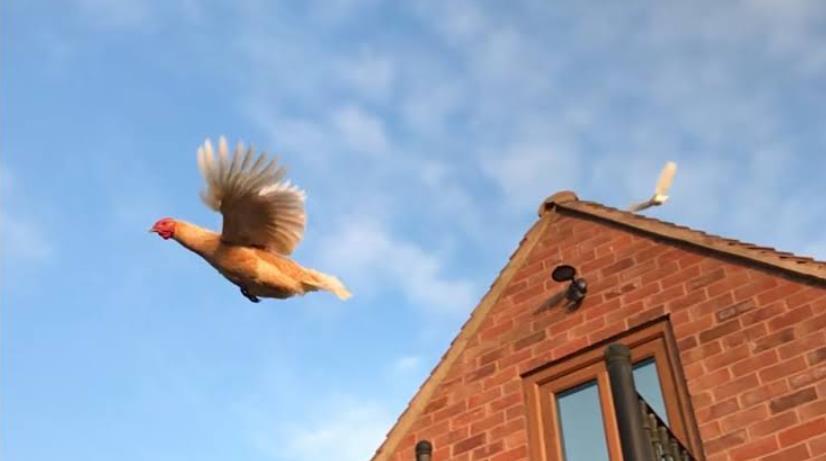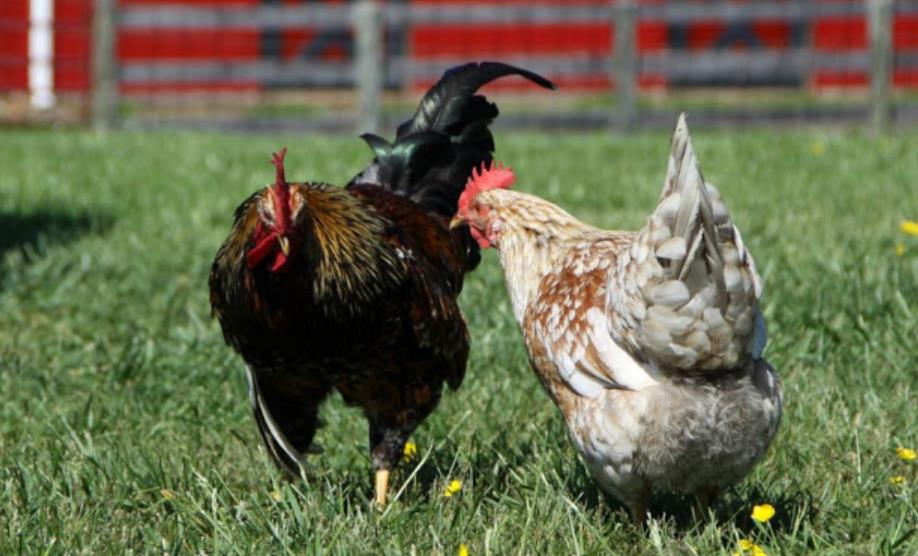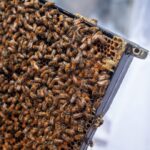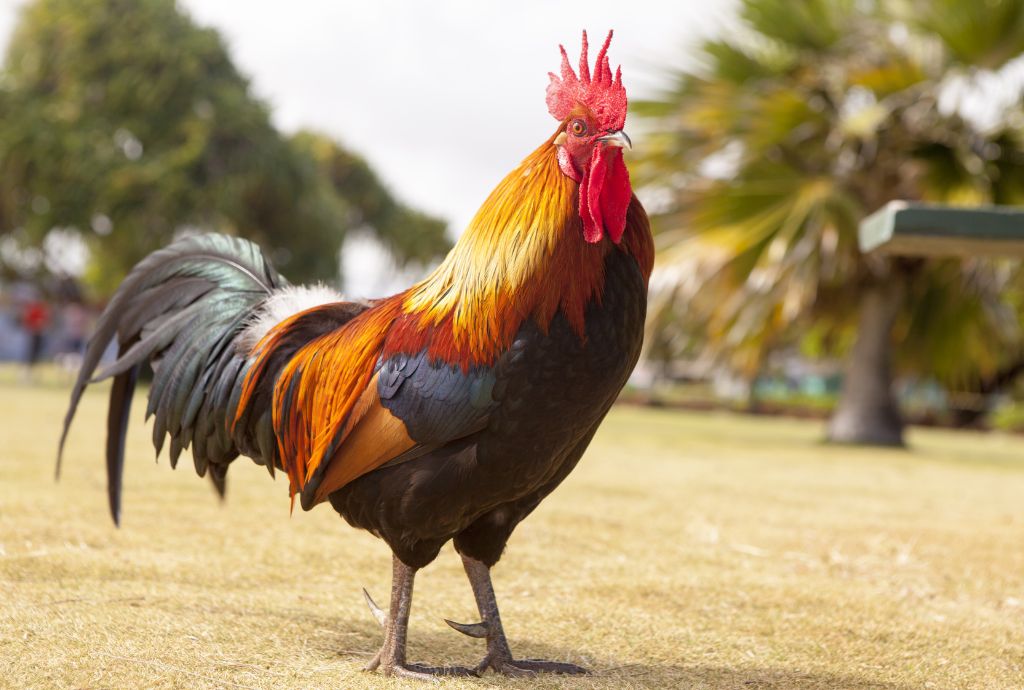
Roosters are the quintessential heralds of dawn, their crowing often synonymous with the break of a new day. This iconic sound serves as nature’s alarm clock and holds significant social functions within the avian world. Understanding when roosters start crowing and the reasons behind this behavior can be invaluable, especially if you’re managing these birds in a farm or backyard setting.
Typically, roosters begin to crow around four to five months of age, although this can vary depending on breed and individual factors. Crowing marks a critical milestone in a rooster’s development, signifying his readiness to establish and defend his territory and communicate his status within the flock. But what exactly triggers this behavior, and how does it evolve as the roosters mature? Let’s delve into the intricacies of crowing in roosters, the factors influencing this behavior, and how you can manage it if you’re keeping roosters.
Table of Contents
The Early Signs of Crowing and What Influences It
Genetic and Environmental Factors Affecting the Onset of Crowing
Crowing is a multifaceted behavior shaped by both genetic predispositions and environmental conditions. Different breeds of roosters may start crowing at slightly different ages. For instance, larger breeds such as the Jersey Giant might begin crowing a bit later than smaller, more agile breeds like the Leghorn, which are known for their earlier vocal developments. Genetics play a critical role in determining not just the age at which crowing begins but also the frequency and volume of the calls.
Environmental factors are equally influential. Roosters are highly responsive to light, and their crowing patterns are often aligned with the sunrise. However, artificial lighting in a coop can alter this natural rhythm, causing roosters to start crowing earlier or more frequently. Additionally, the social environment, including the density of the flock and the presence of other roosters, can significantly impact the onset and intensity of crowing. Roosters with fewer competitors or those established as the dominant male are more likely to crow more dominantly and at a younger age.
Understanding the Purpose of Crowing
Beyond the wake-up call that crowing serves for many humans, for roosters, this behavior has several crucial functions. Primarily, it is a declaration of territory. A rooster crows to alert other roosters of his presence and to warn them off his territory. This is why you might notice that crowing intensifies during the early morning when roosters establish their dominance over the area for the day ahead.
Crowing also plays a role in the social hierarchy of the flock. Roosters will crow to assert dominance and attract hens. The frequency and loudness of a rooster’s crow can help it secure a higher rank within the pecking order. Interestingly, younger roosters often have to balance the frequency of their crowing, as too much can attract unwanted attention from more dominant males, whereas too little can make them appear weak.
The Biological Mechanism Behind Crowing
Crowing is deeply embedded in a rooster’s biological makeup. The primary biological trigger for crowing is the rooster’s circadian rhythm, a natural, internal process that regulates the sleep-wake cycle and repeats roughly every 24 hours. This rhythm is heavily influenced by light exposure. As dawn approaches, the increasing light levels stimulate the rooster’s brain to produce hormones such as testosterone, which in turn triggers the vocal cords, resulting in crowing.
Moreover, crowing is not a random act but a well-coordinated activity involving the rooster’s respiratory and vocal systems. The rooster takes in a deep breath, closes its beak, and forces air through the syrinx (the avian vocal organ) located at the base of the trachea. This action produces the loud, distinctive crow that we associate with these birds. The physical ability to crow develops in parallel with the rooster’s overall growth and hormonal changes during puberty.
Tips for Managing Crowing in Your Flock
If you are keeping roosters, managing their crowing can be important, especially if you live in an area where noise might be an issue. Understanding that roosters are naturally inclined to crow at certain times can help you plan their environment accordingly. Here are some strategies:
- Adjusting Light Exposure: Since roosters respond to light, controlling light exposure can help manage crowing patterns. Avoiding artificial light in the early hours can reduce premature crowing.
- Soundproofing: If noise is a concern, consider soundproofing your chicken coop or placing it further away from living areas.
- Proper Flock Management: Maintaining a balanced number of roosters to hens can prevent excessive crowing. Typically, a good ratio is about one rooster for every ten hens, although this can vary based on the breed and individual temperament.
- Enrichment and Stress Reduction: Keeping your roosters engaged and stress-free can also reduce excessive crowing. Providing them with ample space, perches, and visual barriers can help minimize stress-induced vocalizations.
Factors Influencing the Variability in Crowing
Breed-Specific Characteristics
Different breeds of roosters exhibit unique crowing characteristics. Some breeds are naturally more vocal than others. For example, the Leghorn rooster is known for its loud and frequent crowing, whereas the Cochin rooster tends to be quieter and less frequent in its vocalizations. Understanding the breed-specific traits can help you anticipate and manage crowing behavior more effectively.
Age and Maturity
As mentioned earlier, most roosters start crowing around four to five months of age. However, the exact timing can vary based on individual growth rates and overall health. Younger roosters, or cockerels, might experiment with softer, less frequent crows as they develop. These initial attempts, often referred to as “practice crows,” may sound awkward or incomplete compared to the full-throated crows of mature roosters.
Social Dynamics and Hierarchy
The social structure within a flock significantly influences crowing behavior. Dominant roosters tend to crow more frequently and assertively to maintain their status and ward off rivals. In flocks with multiple roosters, the subordinate males might crow less or at different times to avoid direct confrontation with the dominant rooster. This dynamic can result in a staggered crowing pattern throughout the day, especially during dawn and dusk.
Health and Well-being
A rooster’s overall health can impact its crowing behavior. Roosters in good health, with a well-balanced diet and adequate living conditions, are more likely to exhibit regular and robust crowing. Conversely, health issues such as respiratory infections, nutritional deficiencies, or environmental stressors can lead to decreased crowing frequency or altered vocalizations.
Managing Multiple Roosters
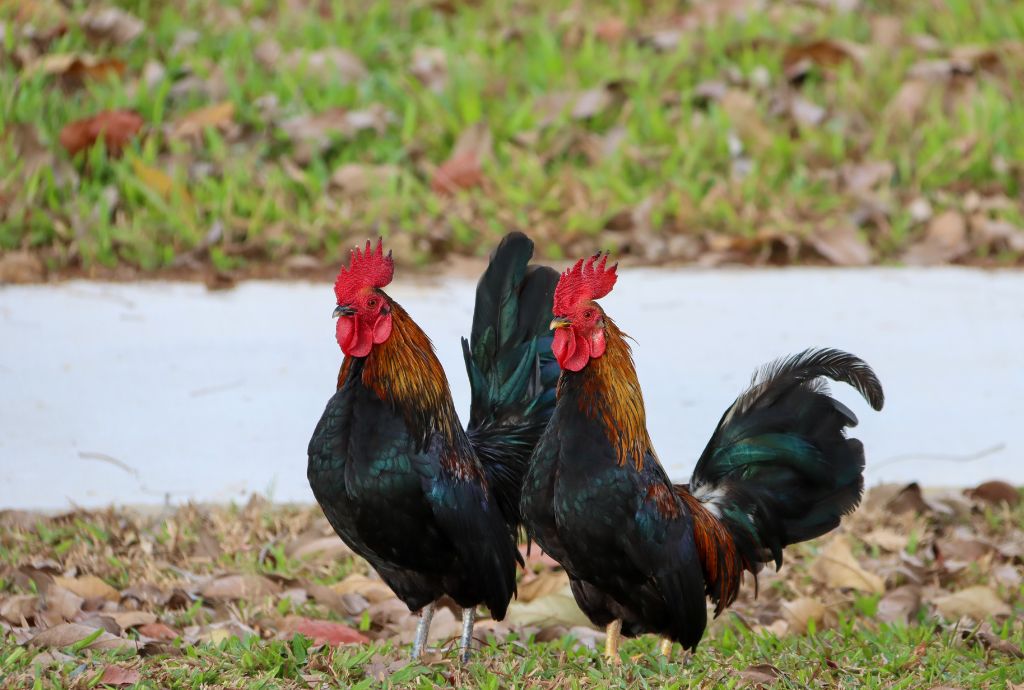
Balancing the Flock
Keeping multiple roosters in a flock can be challenging, but with proper management, it is possible to maintain harmony. Ensuring a balanced ratio of roosters to hens is crucial to prevent excessive crowing and aggressive behavior. Generally, a ratio of one rooster to ten hens is recommended, but this can vary depending on the breed and individual temperament of the roosters.
Providing Adequate Space
Crowding can exacerbate aggressive behaviors and increase the frequency of crowing as roosters compete for dominance. Providing adequate space, both inside the coop and in the outdoor run, can help reduce stress and allow roosters to establish their territories without constant conflict. Visual barriers, such as shrubs or fencing, can also create natural divisions within the space, giving roosters a sense of privacy and reducing the likelihood of confrontations.
Enrichment and Engagement
Keeping roosters engaged with environmental enrichment can help reduce excessive crowing. Offering a variety of perches, dust baths, and foraging opportunities can keep roosters occupied and mentally stimulated. Additionally, rotating the location of feeders and waterers can encourage natural foraging behaviors and reduce boredom-induced crowing.
Managing Aggression
Aggression among roosters is a natural behavior, but it can be managed with proper techniques. Introducing new roosters gradually and under supervision can help prevent fights. Ensuring that roosters have enough hens to court and mate with can also reduce aggression, as competition for mates is a primary trigger for fights. In some cases, using rooster-specific calming products or supplements may help reduce aggressive behaviors and excessive crowing.
Practical Tips for Reducing Crowing Noise
Soundproofing the Coop
If noise is a significant concern, soundproofing the chicken coop can be an effective solution. Adding insulation to the walls and roof of the coop can help dampen the sound of crowing. Additionally, using heavy-duty curtains or soundproofing panels around the coop can further reduce noise levels. Positioning the coop away from living areas or neighbors can also help mitigate the impact of crowing.
Modifying Lighting Conditions
Since roosters are highly responsive to light, controlling light exposure can help manage crowing patterns. Avoiding artificial light in the early hours can prevent premature crowing. Installing blackout curtains in the coop can help keep the interior dark longer, delaying the onset of crowing. Additionally, using timers for artificial lighting can help regulate the light schedule and reduce excessive crowing.
Creating a Crow Collar
A crow collar is a humane device that can help reduce the volume of a rooster’s crow. The collar works by slightly restricting the airflow through the rooster’s trachea, making it harder for the rooster to produce a loud crow. It is important to use crow collars correctly and monitor the rooster regularly to ensure that the collar is not causing any discomfort or health issues.
Conclusion
Understanding when roosters start crowing and the factors influencing this behavior can help you manage your flock more effectively. Roosters typically begin crowing at around four to five months of age, with variations depending on breed, environment, and social dynamics. By providing proper care, managing the flock’s social structure, and implementing practical noise-reduction strategies, you can enjoy the benefits of having roosters without the challenges of excessive crowing.
